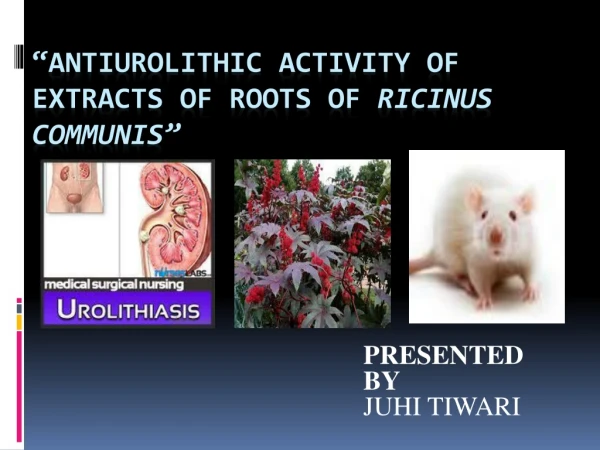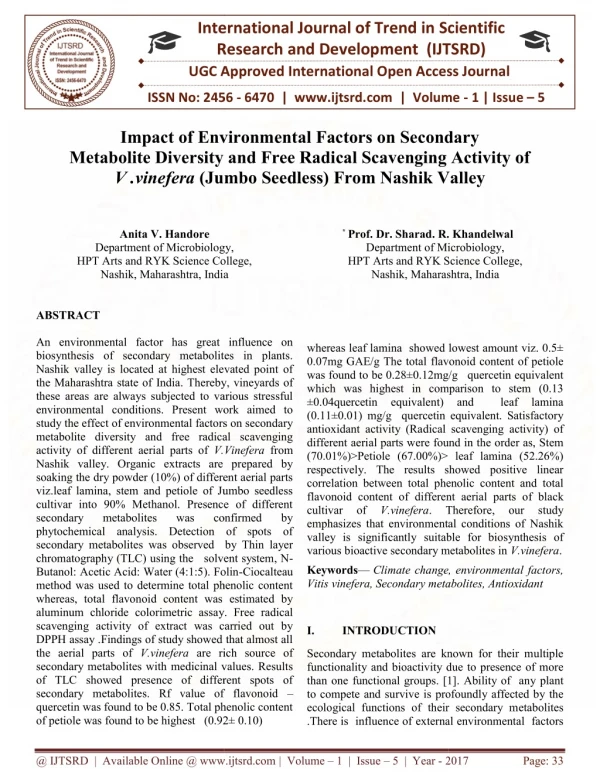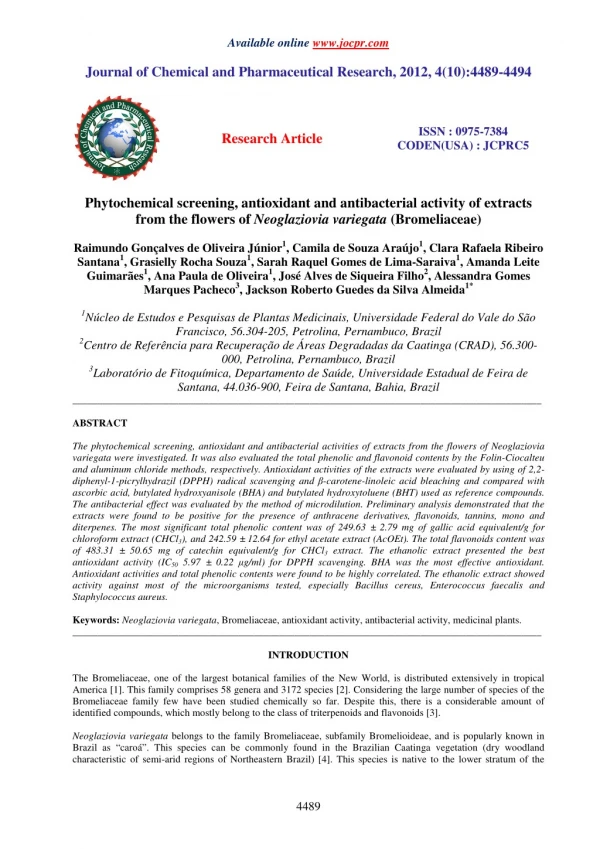Impact of Environmental Factors on Secondary Metabolite Diversity and Free Radical Scavenging Activity of V .vinefera Ju
Environmental factors has great influence on biosynthesis of secondary metabolites in plants. Nashik valley is located at highest elevated point of the Maharashtra state of India . Thereby, vineyards of these area are always subjected to various stressful environmental conditions. Present work aimed to study the effect of environmental factors on secondary metabolite diversity and free radical scavenging activity of different aerial parts of V.Vinefera from Nashik valley. Organic extracts are prepared by soaking the dry powder 10 of different aerial parts viz.leaf lamina, stem and petiole of Jumbo seedless cultivar into 90 Methanol. Presence of different secondary metabolites were confirmed by phytochemical analysis. Detection of spots of secondary metabolites was observed by Thin layer chromatography TLC using the solvent system, N Butanol Acetic Acid Water 4 1 5 . Folin Ciocalteau method was used to determine total phenolic content whereas, total flavonoid content was estimated by aluminum chloride colorimetric assay. Free radical scavenging activity of extract was carried out by DPPH assay .Findings of study showed that almost all the aerial parts of V.vinefera are rich source of secondary metabolites with medicinal values. Results of TLC showed presence of different spots of secondary metabolites. Rf value of flavonoid quercetin was found to be 0.85. Total phenolic content of petiole was found to be highest 0.92u00c2u00b1 0.10 whereas leaf lamina showed lowest amount viz. 0.5u00c2u00b1 0.07mg GAE g The total flavonoid content of petiole was found to be 0.28u00c2u00b10.12mg g quercetin equivalent which was highest in comparison to stem 0.13 u00c2u00b10.04quercetin equivalent and leaf lamina 0.11u00c2u00b10.01 mg g quercetin equivalent. Satisfactory antioxidant activity Radical scavenging activity of different aerial parts were found in the order as, Stem 70.01 Petiole 67.00 leaf lamina 52.26 respectively. The results showed positive linear correlation between total phenolic content and total flavonoid content of different aerial parts of black cultivar of V. vinefera. Therefore, our study emphasizes that environmental conditions of Nashik valley is significantly suitable for biosynthesis of various bioactive secondary metabolites in V.vinefera. Anita V. Handore | Prof. Dr. Sharad R. Khandelwal "Impact of Environmental Factors on Secondary Metabolite Diversity and Free Radical Scavenging Activity of V .vinefera (Jumbo Seedless) From Nashik Valley" Published in International Journal of Trend in Scientific Research and Development (ijtsrd), ISSN: 2456-6470, Volume-1 | Issue-5 , August 2017, URL: https://www.ijtsrd.com/papers/ijtsrd2240.pdf Paper URL: http://www.ijtsrd.com/pharmacy/pharmaceutics/2240/impact-of-environmental-factors-on-secondary-metabolite-diversity-and-free-radical-scavenging-activity-of-v-vinefera-jumbo-seedless-from-nashik-valley/anita-v-handore
★
★
★
★
★
81 views • 7 slides



